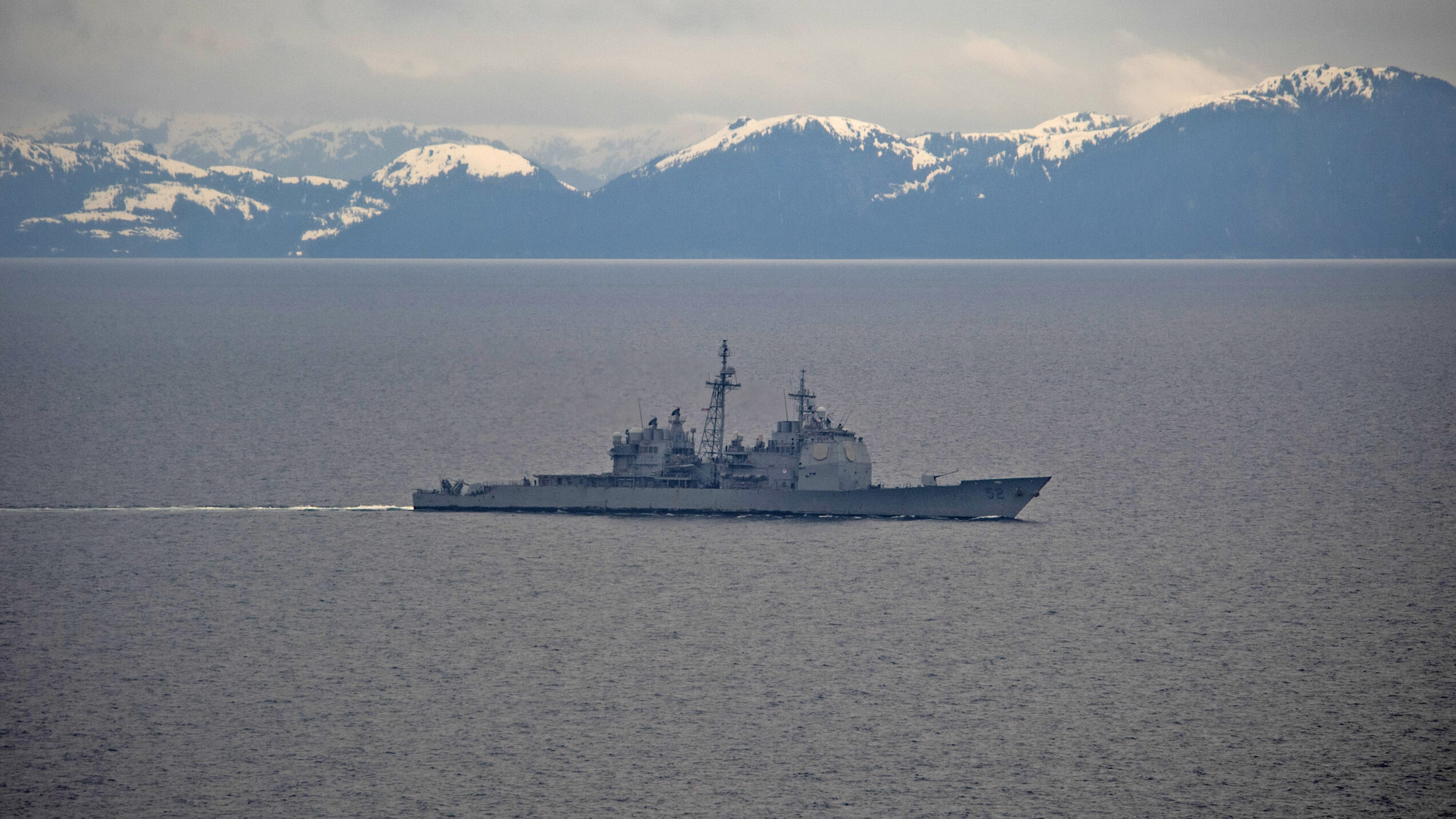
The Ticonderoga-class guided-missile cruiser USS Bunker Hill (CG-52) transits the Gulf of Alaska as part of the Theodore Roosevelt Carrier Strike Group. (U.S. Navy photo by Mass Communication Specialist Seaman Dylan Lavin)
MOORESTOWN, N.J. — Lockheed Martin, the longtime maker of the SPY-1 ballistic missile defense radar, says it will soon wrap up new production of the system but is actively preparing this southern New Jersey factory to continue sustaining the system used by several militaries around the world through 2060.
The 400-acre campus here houses materials and testing equipment for several of the defense contractor’s Pentagon radar programs: the Homeland Defense Radar – Hawaii for the Missile Defense Agency, the Army’s Q-53 counterfire acquisition radar as well as the much newer SPY-7 BMD radar destined for Canadian, Japanese and Spanish ships.
But it’s SPY-1, the system initially deployed in the 1970s, and now aboard numerous US Navy cruisers and destroyers, that Lockheed executives say have become top of mind as they wrap up some of the final assembly and testing they’ll do on new units.
Joe DePietro, a Lockheed vice president and the Moorestown’s campus general manager, said SPY-1 radar production for the US Navy was completed several years ago, but the company has continued to build new systems for international customers — most recently, South Korea. The company has also received auxiliary contracts to upgrade certain US Navy radars with a “low-noise amplifier” technology.
“We’re thinking about the sustainability of the radar — 2040 to 2060 and what we’re going to need asset-wise,” he told reporters here on Monday. (Lockheed Martin covered certain lodging and transportation costs for Breaking Defense to tour their Moorestown facility.)
“We’re maintaining that capability, and in the meantime, the people that have the expertise [are working on] other radar programs, waiting for when that opportunity is going to present itself to move into a bigger sustainment view on SPY-1,” he continued.
Inside the company’s factory, executives said a large space, now devoted to assembling MK-41 Vertical Launching Cells, was once dedicated to SPY-1. The space was recently refurbished for the MK-41 when a decision was made to vacate a different building in Maryland and move many of its assets to Moorestown. Still though, certain areas are being reserved for repairing and testing any future SPY-1 radars that are damaged while in operations.
The issues and questions surrounding sustainment of the radar are not just internal to Lockheed. During the tour, executives said they have raised the subject with the Navy’s acquisition offices as well as directly with Chief of Naval Operations Adm. Michael Gilday when the senior officer visited the facility earlier this year.
A spokesman for the CNO confirmed the admiral visited Lockheed’s Moorestown campus on Jan. 30, but declined to comment on what they called private discussions with industry.
The SPY-1 radar is installed on a variety of US Navy cruisers and destroyers, and DePietro said the company holds a contract that allows the Pentagon to purchase spare parts as needed. Meanwhile, the service is moving forward on a $3.2 billion deal with Raytheon to outfit its fleet with several variants of the SPY-6 radar, some of which will replace SPY-1 units. But those backfits will take years to install as the service individually schedules ships for maintenance to receive upgrades. That means the SPY-1 radar still has years of service left inside the US fleet.
Beyond the US Navy, the governments of Australia, Japan, Norway, Spain and South Korea all have SPY-1 radars on some of their warships.
“When we say through 2060, that’s because we’ve loaded in both the domestic and the international support items that would be required … to be able to sustain that system long term,” said DePietro. “They need to maintain the radar sets to the service life of the ships…They want to be able to keep them for the next 15 or 20 years.”








